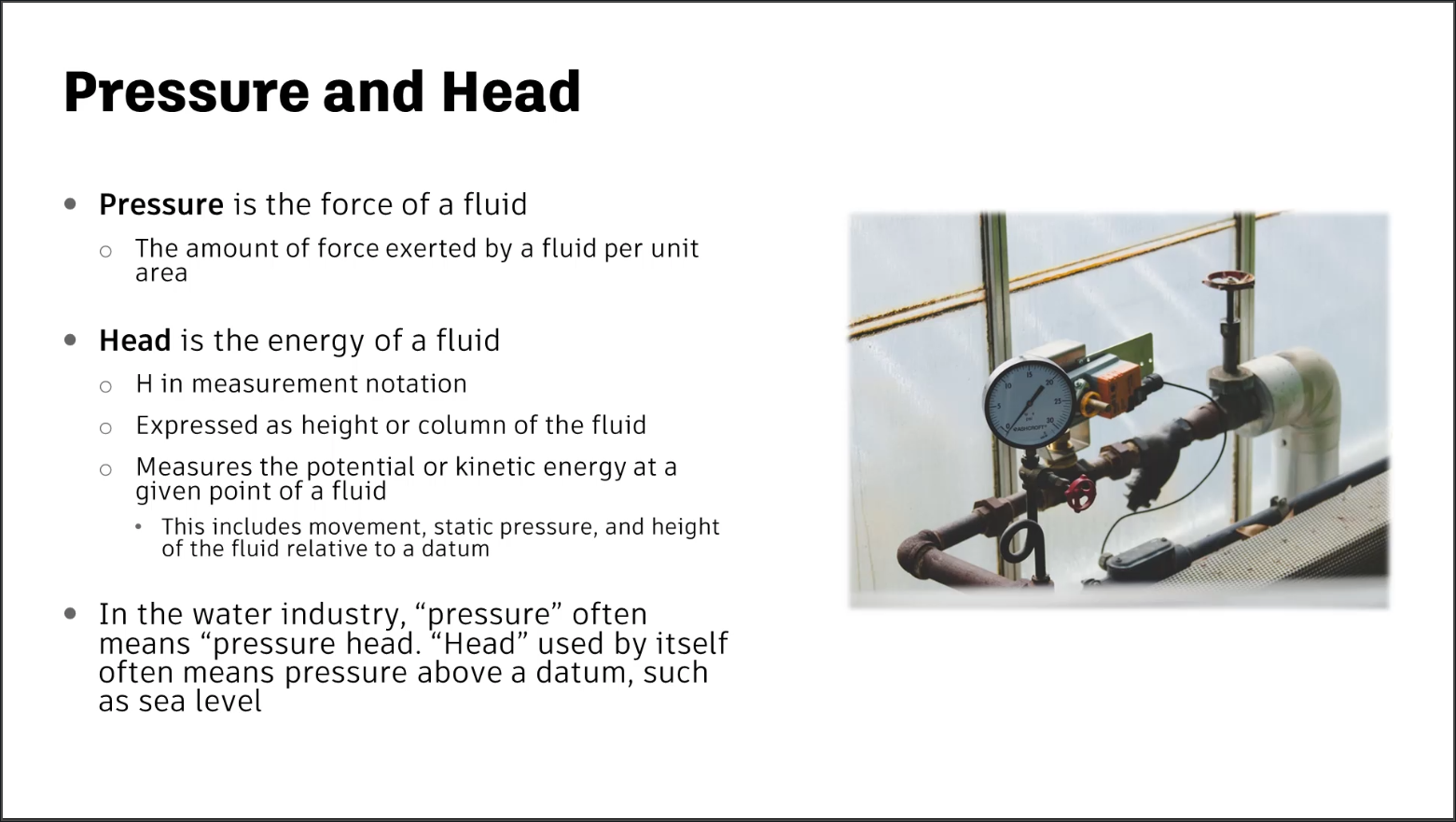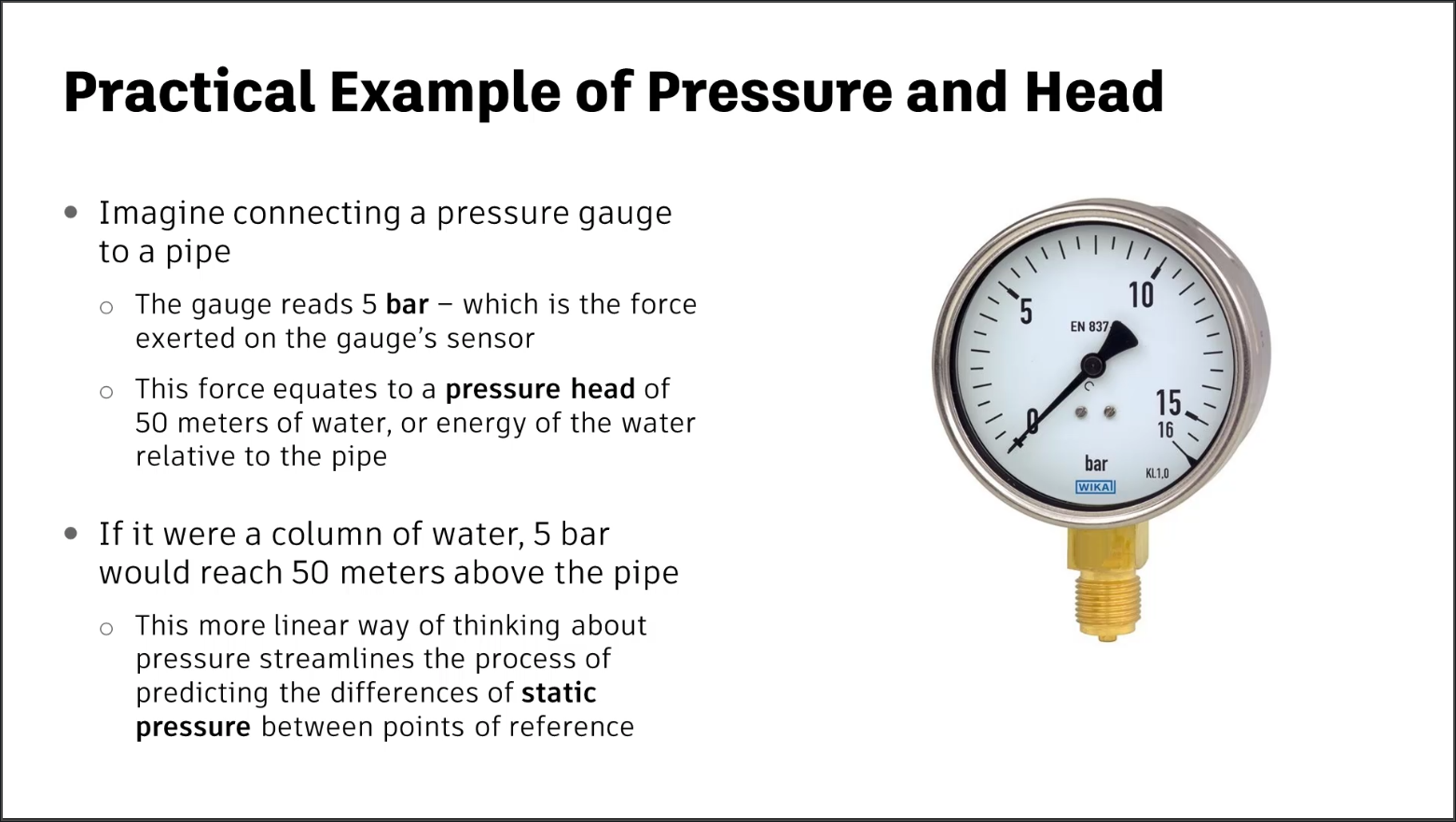& Construction

Integrated BIM tools, including Revit, AutoCAD, and Civil 3D
& Manufacturing

Professional CAD/CAM tools built on Inventor and AutoCAD
Transcript
00:03
Before modeling water supply networks,
00:06
you must have a basic understanding of
00:07
the terminology used when discussing water pressure,
00:11
pressure is the force of a fluid.
00:14
More specifically,
00:15
pressure refers to the amount of force exerted by a fluid per unit area.
00:21
Head is the energy of a fluid
00:23
head or age. In measurement notation is expressed as a height or column of the fluid.
00:29
Specifically,
00:30
head measures the potential or kinetic energy at a given point in a fluid.
00:35
This includes energy associated with the movement of the fluid.
00:39
The energy from the fluid's static pressure
00:41
and the energy from the height of the fluid relative to a
00:44
atom
00:46
in the water industry. Pressure often means pressure head
00:50
head used by itself, often means pressure head above a datum such as sea level.
00:56
A simple way to visualize the relationship between pressure and head
00:60
is by imagining connecting a pressure gauge to a pipe.
01:04
The gauge reads five bar which is the force exerted on the gauge's sensor.
01:09
This force equates to a pressure head of 50 m of
01:12
water or the energy of the water relative to the pipe.
01:17
Another way to imagine it
01:18
a column of water that measures five bar would reach 50 m above the pipe.
01:24
This more linear way of thinking about pressure
01:26
streamlines the process of predicting the differences of
01:29
static pressure or the pressure in a fluid
01:32
that is unmoving between points of reference.
00:03
Before modeling water supply networks,
00:06
you must have a basic understanding of
00:07
the terminology used when discussing water pressure,
00:11
pressure is the force of a fluid.
00:14
More specifically,
00:15
pressure refers to the amount of force exerted by a fluid per unit area.
00:21
Head is the energy of a fluid
00:23
head or age. In measurement notation is expressed as a height or column of the fluid.
00:29
Specifically,
00:30
head measures the potential or kinetic energy at a given point in a fluid.
00:35
This includes energy associated with the movement of the fluid.
00:39
The energy from the fluid's static pressure
00:41
and the energy from the height of the fluid relative to a
00:44
atom
00:46
in the water industry. Pressure often means pressure head
00:50
head used by itself, often means pressure head above a datum such as sea level.
00:56
A simple way to visualize the relationship between pressure and head
00:60
is by imagining connecting a pressure gauge to a pipe.
01:04
The gauge reads five bar which is the force exerted on the gauge's sensor.
01:09
This force equates to a pressure head of 50 m of
01:12
water or the energy of the water relative to the pipe.
01:17
Another way to imagine it
01:18
a column of water that measures five bar would reach 50 m above the pipe.
01:24
This more linear way of thinking about pressure
01:26
streamlines the process of predicting the differences of
01:29
static pressure or the pressure in a fluid
01:32
that is unmoving between points of reference.
Before modeling water supply networks, you must have a basic understanding of the terminology used when discussing water pressure.

